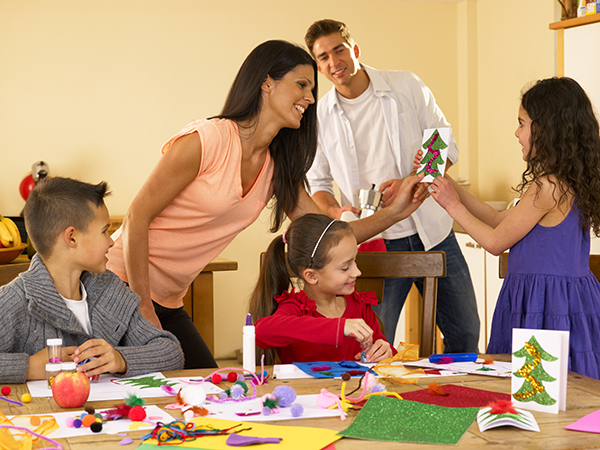
Crafting with your family is a wonderful way to bond and create lasting memories. However, in order to ensure a successful and enjoyable experience, it is important to approach DIY family craft projects with a strategic mindset.
This article will guide you through 11 essential steps to help you strategize your masterpiece. From project selection and assessing difficulty levels to ensuring safety precautions and exploring variations, this comprehensive guide will equip you with the knowledge and tools needed for a successful family crafting adventure.
Step 1: Project Selection
The first step in embarking on a DIY family craft project is project selection. This crucial step sets the tone for the entire creative process.
Project selection begins with finding project inspiration and DIY project ideas that resonate with the family's interests and skill levels. It's important to consider the materials required, the time commitment, and the overall feasibility of the project. This step involves brainstorming and researching various craft projects, exploring different mediums such as painting, sewing, or woodworking.
The goal is to find a project that sparks excitement and fosters creativity. Whether it's making personalized photo frames, creating homemade jewelry, or building a birdhouse, the project selection process is an opportunity to nurture the family's artistic spirit and create lasting memories together.
Step 2: Assessing Difficulty Level
Assessing the difficulty level is the second crucial step in embarking on a DIY family craft project, ensuring that the chosen project aligns with the family's skillset and capabilities. To evaluate the complexity of a project, it is important to gauge the skill level of each family member involved.
Consider their previous experience with similar projects, their comfort level with different crafting techniques, and their ability to follow instructions. This assessment will help determine whether the project is too challenging or too simple for the family, ensuring that everyone can actively participate and contribute to the final masterpiece.
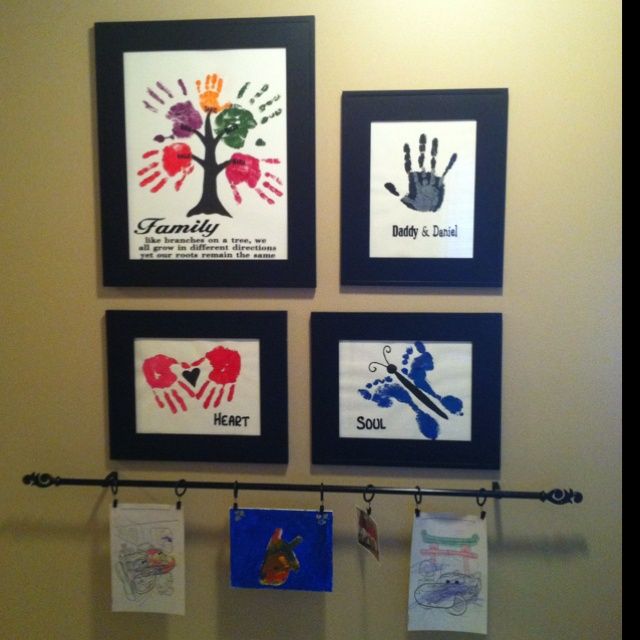
It is essential to strike a balance between a project that is engaging and challenging enough to keep everyone interested, but not too overwhelming that it becomes frustrating. By carefully evaluating complexity and gauging skill level, the family can select a DIY craft project that will provide an enjoyable and rewarding experience for all.
Step 3: Ensuring Safety Precautions
When embarking on a DIY family craft project, it is crucial to prioritize safety by implementing necessary precautions and guidelines. Ensuring a childproof environment is essential to prevent any accidents or injuries. Here are some safety guidelines for crafting at home:
- Organize your workspace: Keep all sharp objects, such as scissors and needles, out of reach of children. Use containers or boxes to store craft supplies.
- Use child-friendly materials: Opt for non-toxic and child-safe materials to avoid any health hazards. Read labels and instructions carefully before using any products.
- Supervision is key: Always supervise children during craft activities, especially when using tools or equipment that may pose risks.
- First aid kit: Keep a well-stocked first aid kit nearby in case of minor injuries.
- Clean up properly: Dispose of sharp objects properly and clean up any spills or messes to prevent slips and falls.
Step 4: Estimating Project Duration
To accurately plan your DIY family craft project, it is essential to estimate the duration of the project. Creating a project timeline is crucial for effective time management and ensuring that you allocate enough time for each step of the process.
Start by breaking down the project into smaller tasks and estimating the time required for each task. Consider factors such as the complexity of the craft, the number of people involved, and the availability of materials and tools.
It is important to be realistic in your estimations and allow for unexpected delays or challenges that may arise. By estimating the project duration and creating a timeline, you can effectively manage your time and ensure a smooth and successful crafting experience for your family.
Step 5: Determining Age Appropriateness
Determining the age appropriateness of a DIY family craft project is essential for ensuring that everyone can fully participate and enjoy the activity. Taking into consideration the age of the participants will help you choose a project that is suitable for their skill level and attention span. Here are some factors to consider when determining the age appropriateness of a craft project:
- Project difficulty: Assess the complexity of the project and the skills required to complete it. Younger children may need simpler projects with fewer steps, while older children and adults can handle more intricate and challenging crafts.
- Developmental stage: Consider the developmental abilities and interests of the participants. Preschoolers may enjoy projects that involve simple shapes and colors, while older children may be more interested in projects that require problem-solving or creativity.
Step 6: Identifying Project Benefits
Step 6: Identifying Project Benefits is a crucial step in the DIY family craft project process.

By identifying both tangible and intangible benefits, you can better understand the value and impact of the project.
Tangible benefits may include a finished product or a new skill learned, while intangible benefits can range from enhanced creativity to strengthened family bonds.
Tangible and Intangible Benefits
Frequently overlooked yet highly impactful, identifying the tangible and intangible benefits of a DIY family craft project is a crucial step in strategizing your masterpiece. By understanding the potential advantages, you can better plan and execute your project, ensuring that it meets your desired outcomes.
Here are some tangible benefits of DIY family craft projects:
- Cost savings: Creating your own crafts can save money compared to buying ready-made items.
- Skill development: Engaging in crafts as a family can help improve various skills, such as creativity, problem-solving, and fine motor skills.
And here are some intangible benefits:
- Bonding and quality time: Working together on a craft project strengthens family bonds and provides an opportunity for quality time spent together.
- Personal satisfaction: Completing a craft project can bring a sense of accomplishment and pride, boosting overall well-being.
Enhancing Family Bond
Enhancing family bond is a crucial aspect to consider when identifying the benefits of a DIY family craft project. Building strong relationships and creating lasting memories are key elements in fostering a sense of togetherness and unity within the family.
Engaging in craft projects together allows family members to collaborate, communicate, and work towards a common goal. The shared experience of creating something with their own hands strengthens the bond between family members, as they celebrate their achievements and overcome challenges together.

These projects provide a platform for open communication, where family members can express their creativity, share ideas, and learn from one another. The memories created during these projects become cherished moments that the family can look back on with love and nostalgia, further solidifying their connection.
Step 7: Gathering Materials Needed
Step 7 of embarking on DIY family craft projects involves gathering the necessary materials.
This step includes exploring budget-friendly material options, such as repurposing items you already have or searching for affordable alternatives.
Additionally, it is important to consider sourcing materials sustainably, by opting for eco-friendly options whenever possible.
Budget-Friendly Material Options
When gathering materials needed for your DIY family craft project, it is important to consider budget-friendly material options. Not only will this save you money, but it will also encourage creativity and resourcefulness.
Here are some budget-friendly options and upcycling ideas to help you get started:
- Recycled materials: Look around your house for items that can be repurposed, such as cardboard boxes, plastic bottles, and old magazines.
- Nature's treasures: Take advantage of what nature has to offer by using leaves, twigs, and stones in your crafts. You can also gather pinecones, seashells, and feathers during your outdoor adventures.
- Pro tip: Before using natural materials, make sure to clean and dry them properly to prevent any unwanted critters or mold.
Creative Alternatives for Supplies
For a cost-effective approach to gathering materials for your DIY family craft project, consider exploring creative alternatives.
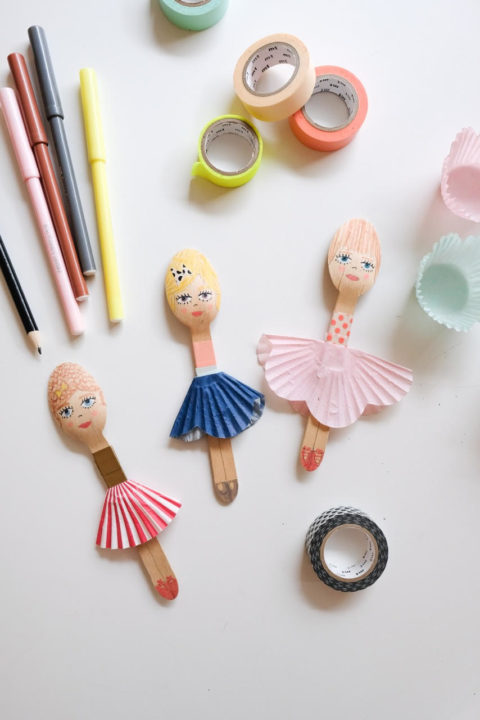
One option is to engage in creative upcycling, where you repurpose items that would otherwise be discarded. Look around your home for unused or old items that can be transformed into art supplies. For example, old t-shirts can be cut into strips and used for weaving or braiding projects, while empty glass jars can be painted and turned into decorative vases or storage containers.
Another option is to search for thrift store finds. Thrift stores often have a wide variety of inexpensive materials that can be used for crafting, such as fabric remnants, buttons, ribbons, and even old picture frames.
Sourcing Materials Sustainably
To ensure the sustainability of your DIY family craft project, it is crucial to source materials responsibly. By opting for sustainable sourcing and eco-friendly alternatives, you can not only reduce your environmental impact but also set a positive example for future generations.
Here are some tips on how to gather materials sustainably:
- Reuse and repurpose: Look around your house for items that can be repurposed for your craft project. Old clothes, bottles, and packaging materials can all find new life as craft supplies.
- Thrift stores and yard sales: Explore these options to find gently-used materials such as fabric, yarn, and art supplies. Not only will you save money, but you'll also be giving a second life to items that might otherwise end up in a landfill.
Step 8: Tips for Easy Cleanup
To ensure a smooth and efficient cleanup process during your DIY family craft projects, it is important to implement these tips:
- Designate specific areas for different supplies. This will help keep everything organized and easily accessible when needed. Consider using containers or bins to store items like paintbrushes, scissors, and glue, making it easier to put them away after use.
- Lay down protective coverings, such as old newspapers or plastic sheets, to catch any spills or messes. This will make cleanup a breeze as you can simply gather up the coverings and dispose of them.
- Encourage everyone in the family to clean up their own workspaces and put away their materials once the project is complete.
Step 9: Display and Storage Ideas
To effectively showcase and organize your DIY family craft projects, it is important to explore various display and storage ideas that can enhance the overall aesthetic and functionality of your creations.
Here are some display ideas to consider:
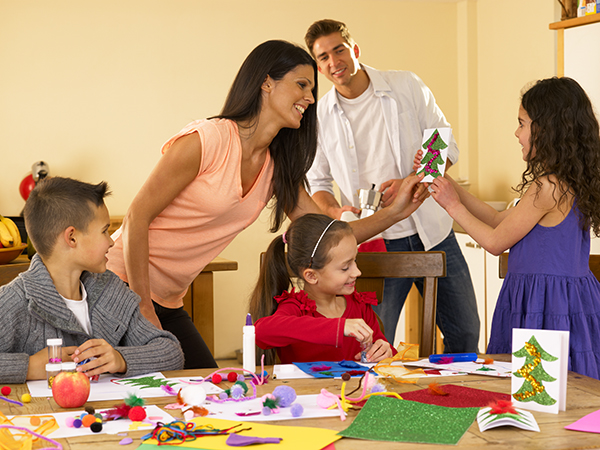
- Create a dedicated gallery wall or bulletin board to showcase your crafts.
- Use floating shelves or shadow boxes to display smaller crafts.
- Hang mobiles or create a hanging display to add visual interest.
- Utilize picture frames to showcase pressed flowers or paper crafts.
And here are some storage solutions:
- Invest in clear plastic bins or storage boxes to easily locate and organize your crafts.
- Use labeled storage containers or bins to categorize different craft supplies.
- Consider using a rolling cart or portable storage unit for easy access and mobility.
- Use hanging organizers or pegboards to maximize vertical storage space.
Step 10 covers the essential crafting tools needed to successfully complete DIY family craft projects. Having the right tools can make a significant difference in the outcome of your project. While there are many specialized tools available, there are also budget-friendly alternatives that can get the job done just as effectively.
Must-have tools include a good pair of scissors for cutting paper and fabric, a cutting mat to protect your work surface, a ruler for measuring and straight lines, and a variety of adhesive options such as glue sticks, double-sided tape, and hot glue gun. Additionally, having a set of paintbrushes, a craft knife, and a hole punch can expand your creative possibilities.
Step 11: Exploring Craft Project Variations
Craft project variations offer endless possibilities for creative expression and innovation within the DIY family crafting realm. By making craft project modifications and adapting project instructions, you can personalize your creations and make them truly unique.
Here are two ways you can explore craft project variations:
- Material Substitutions:
- Instead of using traditional materials, experiment with alternative options such as recycled materials, natural elements, or unconventional items.
- Consider substituting different colors, textures, or patterns to give your project a fresh and unexpected twist.
- Design Alterations:
- Modify the size, shape, or overall design of the project to suit your preferences and needs.
- Combine different craft techniques or mix and match elements from various projects to create something entirely new.
Frequently Asked Questions
How Do I Involve Multiple Generations in a DIY Family Craft Project?
Involving multiple generations in a DIY family craft project can foster intergenerational bonding and creativity. By creating a space that encourages freedom and expression, family members of all ages can contribute their ideas and skills, creating a meaningful and collaborative experience.
What Are Some Budget-Friendly Options for DIY Family Craft Projects?
Budget friendly options for DIY family craft projects include using budget friendly materials such as recycled items, thrift store finds, and household items. These options allow for creativity and freedom while keeping costs low.
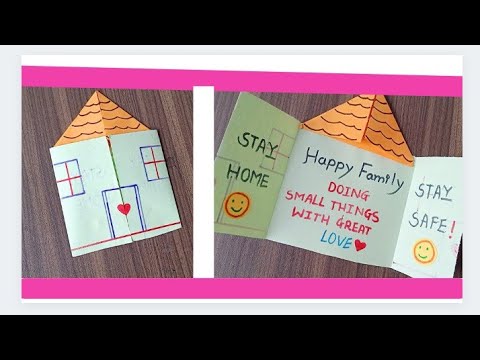
Are There Any Specific Craft Projects That Are Ideal for Outdoor Settings?
Outdoor craft projects offer a unique opportunity to create DIY garden decorations that can enhance the beauty of outdoor spaces. From painted flower pots to homemade wind chimes, these projects allow for creativity and freedom in crafting.
Can I Repurpose Household Items for My DIY Family Craft Project?
Yes, you can repurpose household items for your DIY family craft project! Upcycling materials is a creative and cost-effective way to breathe new life into old items, allowing for freedom and unlimited possibilities in your crafting endeavors.
How Can I Engage My Child's Creativity and Imagination During a DIY Family Craft Project?
Engaging children in DIY family craft projects is a wonderful way to foster their creativity and imagination. By providing them with open-ended materials and encouraging their ideas, you can create an environment that allows for freedom and self-expression.
 Family Craft ProjectsHome ImprovementCooking and BakingReuse and RecycleDIY GiftsEco-Friendly ProjectsDIY Home SolutionsSeasonal ActivitiesFun and GamesLearn TogetherPrivacy PolicyTerms And Conditions
Family Craft ProjectsHome ImprovementCooking and BakingReuse and RecycleDIY GiftsEco-Friendly ProjectsDIY Home SolutionsSeasonal ActivitiesFun and GamesLearn TogetherPrivacy PolicyTerms And Conditions

 Family Craft ProjectsHome ImprovementCooking and BakingReuse and RecycleDIY GiftsEco-Friendly ProjectsDIY Home SolutionsSeasonal ActivitiesFun and GamesLearn TogetherPrivacy PolicyTerms And Conditions
Family Craft ProjectsHome ImprovementCooking and BakingReuse and RecycleDIY GiftsEco-Friendly ProjectsDIY Home SolutionsSeasonal ActivitiesFun and GamesLearn TogetherPrivacy PolicyTerms And Conditions
